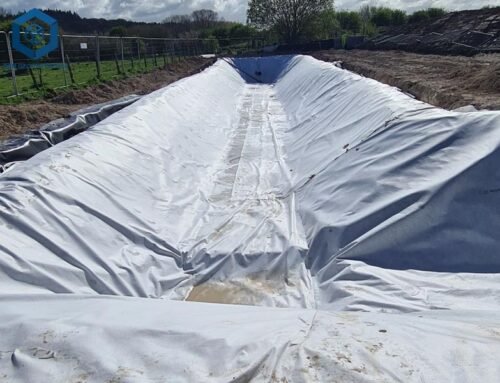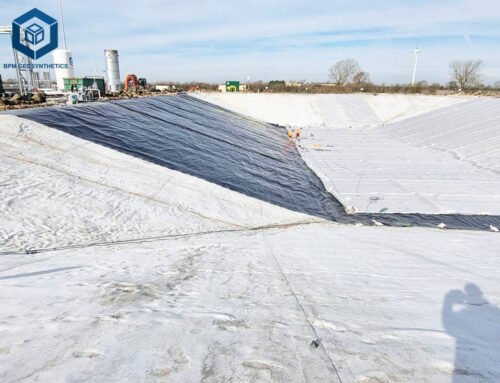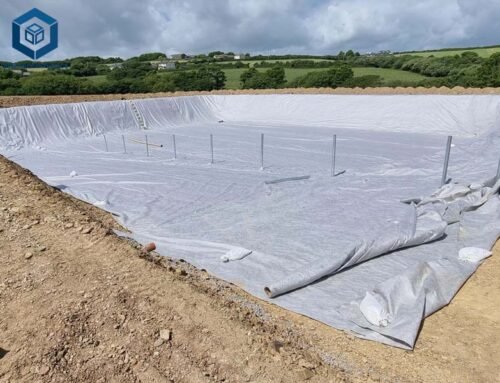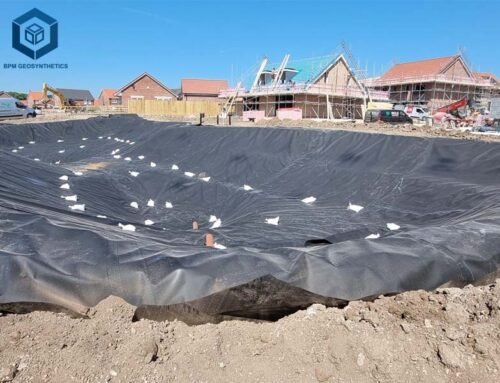Geo grids, critical geosynthetic materials, are transforming civil engineering by providing robust solutions for soil stabilization, reinforcement, and erosion control in projects like road construction, retaining walls, and landfills. Understanding geo grid costs is essential for project managers, engineers, and contractors aiming to optimize budgets while ensuring structural integrity (Fortune Business Insights, 2023). Geo grid cost typically range from $0.05 to $0.70 per square foot ($0.50–$7.00 per square meter), influenced by type, material, tensile strength, and project scale, per BPM Geosynthetics. This guide provides detailed pricing, specifications, and actionable insights to help you make informed decisions for your infrastructure projects.
1. What Is Geo Grid?
Geo grids are synthetic materials with an open, grid-like structure, typically made from high-density polyethylene (HDPE), polypropylene, or polyester, designed to reinforce soils and distribute loads across larger areas (IndiaMART). Used in applications like road construction (45% of global demand), retaining walls, and embankments, geo grids enhance soil stability by 30–50%, reduce aggregate fill by 20–40%, and improve load-bearing capacity by 25%, per Tensar+ software. With lifespans of 20–75+ years and 70% UV resistance, geo grids are vital for sustainable infrastructure, per BaseCore.
Types of Geo Grids
- Uniaxial Geo Grids: High tensile strength (up to 200 kN/m) in one direction, ideal for retaining walls and slopes, costing $0.05–$0.25 per square foot ($0.50–$2.50/m²).
- Biaxial Geo Grids: Balanced strength (20–100 kN/m) in two directions, used for road bases, costing $0.08–$0.35 per square foot ($0.80–$3.50/m²).
- Triaxial Geo Grids: Multi-directional reinforcement for complex projects like landfills, priced at $0.15–$0.50 per square foot ($1.50–$5.00/m²) due to 20% better load distribution (BPM Geosynthetics).
Key Specifications
- Tensile Strength: 20–200 kN/m, per ASTM D6637, for load-bearing.
- Aperture Size: 25–40 mm for aggregate interlocking, per ISO 10319.
- Material: HDPE, polypropylene, or polyester, with 70% UV resistance, per ASTM D4355.
- Durability: 20–75+ years, depending on environmental conditions, per GeoFanTex.
- Certifications: ASTM, GRI, ISO 9001:2015 for 95% quality compliance.
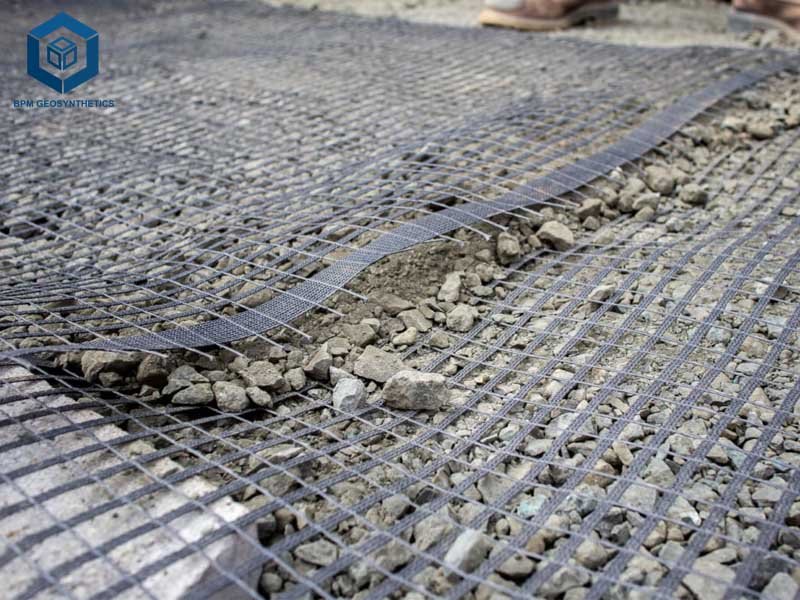
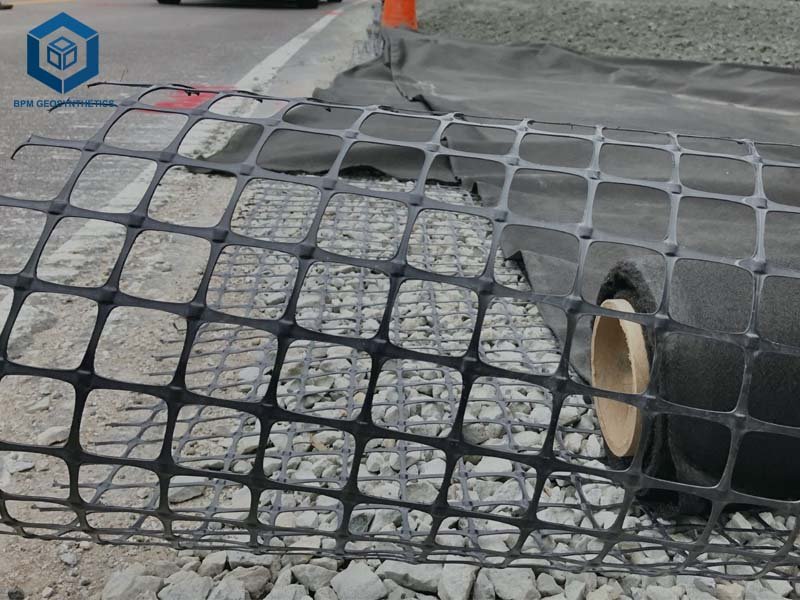
2. Factors Influencing Geo Grid Cost
Geo grid costs vary widely, impacting project budgets by 10–30%, per Geosynthetics Magazine. Understanding these factors ensures accurate cost estimation and optimization.
2.1 Geo Grid Cost – Type of Geo Grid
- Uniaxial: $0.05–$0.25 per square foot, suited for retaining walls with 200 kN/m strength, per BPM Geosynthetics.
- Biaxial: $0.08–$0.35 per square foot, dominates 45% of the market for road stabilization, per Fortune Business Insights.
- Triaxial: $0.15–$0.50 per square foot, used in heavy-load projects, offering 20% better load distribution, per Tensar.
2.2 Geo Grid Cost – Material Composition
- HDPE: $0.05–$0.30 per square foot, durable for 75+ years, per BaseCore.
- Polypropylene: $0.08–$0.35 per square foot, lightweight and flexible, per GeoFanTex.
- Polyester: $0.10–$0.50 per square foot, high creep resistance for retaining walls, per Paramount Materials.
- Fiberglass: $0.10–$0.35 per square foot, alkali-resistant for concrete applications, per Alibaba.
2.3 Geo Grid Cost – Manufacturing Process
- Extrusion: $0.05–$0.20 per square foot, cost-effective for uniaxial geo grids, per IndiaMART.
- Weaving/Knitting: $0.10–$0.40 per square foot, enhances flexibility for biaxial geo grids, per BPM Geosynthetics.
- Welding: $0.15–$0.50 per square foot, used for triaxial geo grids with 20% better strength, per GeoFanTex.
2.4 Geo Grid Cost – Tensile Strength
- Low (20–50 kN/m): $0.05–$0.15 per square foot, for landscaping, per Landscape Discount.
- Medium (50–100 kN/m): $0.15–$0.35 per square foot, for roads and parking lots, per SiteOne.
- High (100–200 kN/m): $0.35–$0.50 per square foot, for heavy infrastructure, per Tensar.
2.5 Geo Grid Cost – Project Scale and Order Volume
- Small Orders (<1,000 m²): $0.20–$0.70 per square foot due to limited economies of scale, per Alibaba.
- Bulk Orders (>10,000 m²): $0.05–$0.30 per square foot, saving 10–30% due to wholesale discounts, per BPM Geosynthetics.
- Custom Sizes: Add 5–15% to costs for tailored dimensions, per Paramount Materials.
2.6 Geo Grid Cost – Accessories and Add-Ons
- Junctions/Integrators: Add $0.05–$0.10 per square foot, improving installation by 15%, per Alibaba.
- Geotextile Composites: $0.15–$0.50 per square foot for combined stabilization.
- Installation Tools: $0.02–$0.05 per square foot for specialized equipment.
2.7 Geo Grid Cost – Geographic Location
- North America: $0.10–$0.50 per square foot, driven by 40.31% market share and BABA compliance, per Fortune Business Insights.
- Europe: $0.15–$0.60 per square foot, higher due to stringent standards, per HUESKER.
- Asia-Pacific: $0.05–$0.30 per square foot, lower due to local production, per Alibaba.
2.8 Geo Grid Cost – Supplier Reputation
- Certified Suppliers: $0.15–$0.50 per square foot, offering 95% quality assurance (ASTM, GRI), per BPM Geosynthetics.
- Generic Suppliers: $0.05–$0.20 per square foot, risking 20% lower durability, per Geosynthetics Magazine.
3. Average Geo Grid Cost in 2025
Based on 2023–2025 market data, geo grid costs range from $0.05 to $0.70 per square foot ($0.50–$7.00/m²), varying by type and application (BPM Geosynthetics, GeoFanTex, Alibaba).
3.1 Cost Breakdown by Type
- Uniaxial Geo Grids: $0.05–$0.25 per square foot ($0.50–$2.50/m²), e.g., TenCate Miragrid 3XT (1,800 sq. ft./roll, 136 lbs), per Paramount Materials.
- Biaxial Geo Grids: $0.08–$0.35 per square foot ($0.80–$3.50/m²), e.g., Tensar TriAx TX160 (358 sq. yd./roll), per Best Materials.
- Triaxial Geo Grids: $0.15–$0.50 per square foot ($1.50–$5.00/m²), e.g., InterAx NX850, reducing aggregate by 9 inches, per Geosynthetics Magazine.
- Composite Geo Grids: $0.20–$0.70 per square foot ($2.00–$7.00/m²), e.g., 100-100KN+50gsm geotextile, per Alibaba.
3.2 Cost by Application
- Road Construction: $0.08–$0.35 per square foot, reducing fill by 20–40%, per Tensar.
- Retaining Walls: $0.05–$0.25 per square foot, with 200 kN/m strength, per SiteOne.
- Landfills: $0.15–$0.50 per square foot, for high load distribution, per Paramount Materials.
- Landscaping: $0.05–$0.20 per square foot, for lightweight stabilization, per Landscape Discount.
3.3 Cost by Region
- USA: $0.10–$0.50 per square foot, with $499.32M market by 2032, per Fortune Business Insights.
- Canada: $0.12–$0.55 per square foot, driven by infrastructure growth.
- Europe: $0.15–$0.60 per square foot, with eco-friendly standards, per HUESKER.
- Australia: $0.10–$0.45 per square foot, per EasyMerchant.
4. Cost-Saving Strategies for Geo Grid Procurement
Optimizing geo grid costs can save 10–30% on project budgets, per BPM Geosynthetics. Here are actionable strategies:
4.1 Bulk Ordering
- Order ≥10,000 m² to reduce costs to $0.05–$0.30 per square foot, saving 15–25%, per Alibaba.
- Example: A 50,000 m² road project saves $5,000–$12,500 with bulk uniaxial geo grids.
4.2 Local Sourcing
- Source from regional suppliers to cut shipping costs by 10–20%, per GeoFanTex.
- Example: U.S. projects using TenCate Miragrid from Georgia save 15% on freight, per Paramount Materials.
4.3 Choose Certified Suppliers
- Select ASTM/GRI-certified suppliers like BPM Geosynthetics for 95% quality assurance, reducing maintenance costs by 20%, per Geosynthetics Magazine.
- Example: Certified geo grids last 50+ years vs. 20 years for generic options.
4.4 Optimize Design
- Use Tensar+ software to reduce aggregate thickness by 9–12 inches, saving 44% on material costs, per Geosynthetics Magazine.
- Example: InterAx NX850 reduced a New York project’s fill costs by $10,000.
4.5 Negotiate MOQs
- Secure MOQs of 1,000–2,000 m² for small projects, saving 10%, per SiteOne.
- Example: A 2,000 m² retaining wall project saves $200–$500 with negotiated MOQs.
4.6 Eco-Friendly Options
- Choose recycled material geo grids (e.g., HUESKER Fortrac T eco PET) to meet sustainability mandates, saving 5–10% on compliance costs, per Fortune Business Insights.
5. Key Specifications for High-Quality Geo Grids
High-quality geo grids meet these standards to ensure 95% performance, per ASTM and GRI:
5.1 Tensile Strength
- Standard: 20–200 kN/m, per ASTM D6637.
- Impact: Supports loads up to 284 kips, per Geosynthetics Magazine.
- Example: Tensar TriAx TX160 (70 kN/m) for heavy haul roads.
5.2 Aperture Size
- Standard: 25–40 mm for aggregate interlocking, per ISO 10319.
- Impact: Improves soil confinement by 30%, per Tensar.
- Example: Interlock 30 (40 mm apertures) for road stabilization, per EasyMerchant.
5.3 Durability
- Standard: 20–75+ years, UV resistance (70%), per ASTM D4355.
- Impact: Reduces maintenance by 20%, per BaseCore.
- Example: HDPE geo grids for 75+ year lifespan, per BaseCore.
5.4 Material Quality
- Standard: HDPE, polypropylene, or polyester, per ASTM D5262.
- Impact: Ensures 95% creep resistance, per Paramount Materials.
- Example: TenCate Miragrid 5XT (polyester) for landfills.
5.5 Certifications
- Standard: ASTM, GRI, ISO 9001:2015.
- Impact: Guarantees 95% compliance, reducing project risks by 15%, per BPM Geosynthetics.
6. Comparing Geo Grids with Alternatives
Geo grids outperform alternatives like geotextiles and geocells in specific applications and BaseCore.
Geo Grids vs. Geotextiles
- Cost: Geo grids ($0.05–$0.70/ft²) vs. geotextiles ($0.15–$0.70/ft²).
- Performance: Geo grids offer 30% better tensile strength (20–200 kN/m) vs. geotextiles (10–50 kN/m).
- Best For: Geo grids for load-bearing (roads, walls); geotextiles for filtration, per IndiaMART.
Geo Grids vs. Geocells
- Cost: Geo grids ($0.05–$0.70/ft²) vs. geocells ($0.50–$5.00/ft²).
- Performance: Geocells provide 20% better confinement for slopes; geo grids excel in flat applications, per BaseCore.
- Best For: Geocells for erosion control; geo grids for road bases.
Cost-Benefit Analysis
- Geo Grids: Reduce aggregate by 20–40%, saving $5,000–$20,000 per 10,000 m², per Tensar.
- Geotextiles: Lower initial cost but 15% less load distribution.
- Geocells: 10% faster installation but limited to specific terrains, per BaseCore.
7. Industry Trends Shaping Geo Grid Cost in 2025
- Sustainability: 60% of geo grids use recycled materials, reducing costs by 5–10%, per HUESKER.
- Advanced Designs: Triaxial geo grids (e.g., InterAx) reduce fill by 9–12 inches, saving 44%, per Geosynthetics Magazine.
- Automation: 20% faster production lowers costs by 10%, per Ningbo Costume Gifts.
- Infrastructure Boom: 45% market growth in road construction, per Fortune Business Insights.
- Eco-Certifications: EN 15804-compliant geo grids gain 15% market share, per HUESKER.
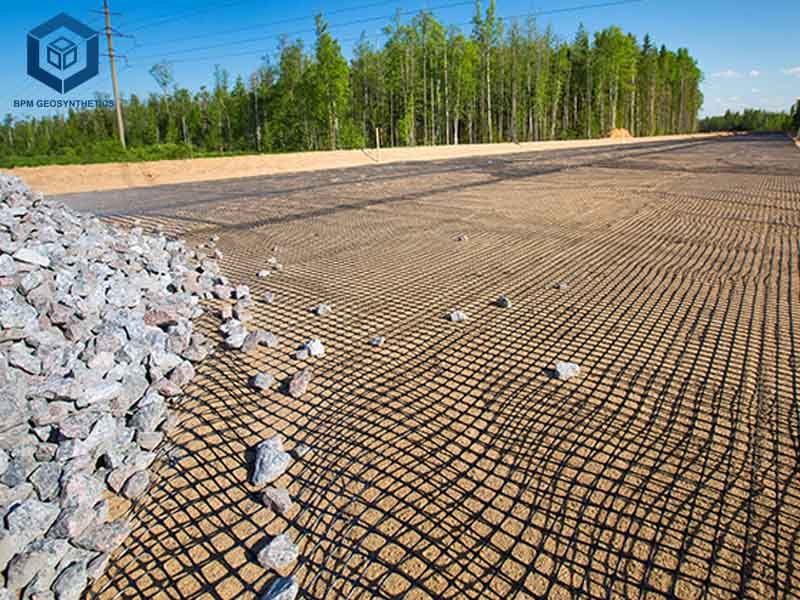

8. How to Source Geo Grids Cost-Effectively
Follow these steps to secure high-quality geo grids at 10–30% savings, per BPM Geosynthetics:
8.1 Geo Grid Cost – Define Project Needs
- Specify application (road, wall), load (20–200 kN/m), and area to ensure 95% alignment, per Tensar.
8.2 Geo Grid Cost – Request Quotes
- Contact certified suppliers like BPM Geosynthetics or TenCate for tailored pricing, saving 10%, per Paramount Materials.
8.3 Geo Grid Cost – Verify Certifications
- Ensure ASTM, GRI, or ISO 9001:2015 compliance for 95% quality, per GeoFanTex.
8.4 Geo Grid Cost – Test Samples
- Evaluate tensile strength (ASTM D6637) and aperture size (ISO 10319) for 20% better performance, per SiteOne.
8.5 Geo Grid Cost – Negotiate Terms
- Secure bulk discounts and MOQs (1,000–2,000 m²) to save 15%, per Alibaba.
8.6 Geo Grid Cost – Use Sourcing Platforms
- Leverage Alibaba or IndiaMART for 10% faster supplier vetting, per JingSourcing.
9. Case Study: Geo Grid Cost Optimization
In 2023, a New York drilling site used Tensar InterAx NX850 geo grids for heavy haul roads (CBR 1 subgrade). By reducing aggregate thickness by 9 inches, the project saved $10,000 (44% cost reduction) compared to biaxial geo grids, per Geosynthetics Magazine. The geo grids cost $0.35 per square foot, with a total project cost of $25,000 for 10,000 m², including installation, demonstrating 20% long-term maintenance savings.
10. Maintenance Tips for Geo Grids
To ensure 20–75 years of performance, follow these tips, per GeoFanTex:
- Installation: Ensure flat, taut placement to improve load distribution by 15%, per Paramount Materials.
- Inspection: Check for tears or stretching annually, reducing failure risk by 20%, per Tensar.
- Erosion Control: Pair with geotextiles to prevent 30% of soil loss.
- Storage: Store in dry, UV-protected conditions to maintain 70% UV resistance, per ASTM D4355.
11. Conclusion
Geo grid costs in 2025 range from $0.05 to $0.70 per square foot, driven by type (uniaxial: $0.05–$0.25; biaxial: $0.08–$0.35; triaxial: $0.15–$0.50), material, and project scale. With 20–200 kN/m tensile strength, 25–40 mm apertures, and 75+ year durability, geo grids reduce aggregate use by 20–40%, saving $5,000–$20,000 per 10,000 m², per Tensar. Certified suppliers like BPM Geosynthetics and TenCate ensure 95% quality, while bulk ordering and local sourcing save 10–30%.
For tailored quotes, contact BPM Geosynthetics to optimize your infrastructure projects. Share this guide to build stronger, smarter, and more cost-effective!

